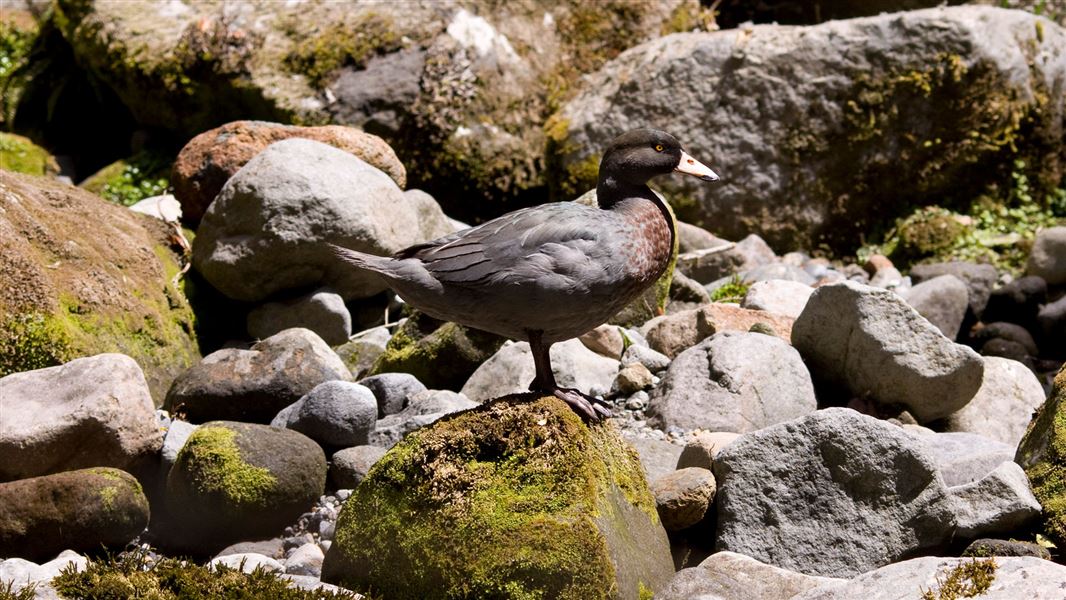Archived content: This media release was accurate on the date of publication.
Date: 26 July 2022
A count earlier this year found 694 whio pairs in monitored areas where trapping is done compared with 862 pairs in the same areas in 2021.
DOC Whio Recovery Group Leader Andy Glaser says some of the decline may be due to last year being a full census year (done every five years). Counts on non-census years are less exhaustive and not all rivers are covered.
“What we’re really seeing, however, is the impact of climate change. We’re getting more severe weather events. Those combined with an already fragile landscape and increased water runoff mean changes to water quality and habitat in the catchments where whio live.
“Torrential rainstorms earlier this year, in places such as Kahurangi National Park, meant really wet cold conditions for young ducklings. Duckling survival numbers have halved over the past two years.
“Storms can also split whio families and reduce their ability to feed at a crucial time in their growth. Flooding washes away invertebrates such as insects and worms, limiting their food supply. The combined effect can be catastrophic.
“It’s definitely not all doom and gloom though. Our protected pair numbers are still high which means the whio population is robust and in a good position for the coming breeding season.”
This week (25–29 July) is Biosecurity Week 2022. The theme of changing landscapes is particularly apt for whio, says Andy Glaser.
“On the one hand landscapes are changing due to climate change, including the habitat for whio which rely on high quality waterways. On the other hand, landscapes are being changed positively for whio, and other species, by community efforts such as predator trapping and weed busting.”
It underlines the importance of national trapping efforts in maintaining the gains in whio populations and holding the line to protect breeding pairs, he says.
Genesis Energy has partnered with DOC on the Whio Forever Recovery Programme for the past 10 years, providing resources and expertise to enhance the survival of whio nationwide.
Genesis’ Chief Operations Officer Rebecca Larking says the company is proud to continue to help whio thrive.
“Whio need us more than ever, and we need them. Healthy whio populations mean healthy river environments, so the more we can do to help this kind of biodiversity the better for all of us.”
Andy Glaser says the efforts of countless volunteers, community groups, iwi and schools in trapping for whio, and wildlife organisations that run breed-for-release programmes, are key to its success.
“All these people are involved in their own awa, caring for these taonga species. They help build resilience in the population so population numbers can grow within the productive seasons. This shows what can be achieved when we all focus on a simple action such as trapping.”
Background information
With an estimated nationwide population of less than 3,000 birds, whio are rarer than some species of kiwi.
Whio are adapted to live on fast-flowing rivers so finding whio means you will also find fresh, fast-flowing water with a good supply of plants and underwater insects.
The Whio Forever Recovery Programme is a partnership between DOC and Genesis to enhance the survival of whio nationwide.
Genesis provides resources and their technical experts to support the work at a national level.
The recovery efforts are focused at eight ‘security sites’ to ensure the retention of viable duck population at these sites and making them fully operational.
Contact
For media enquiries contact:
Email: media@doc.govt.nz
